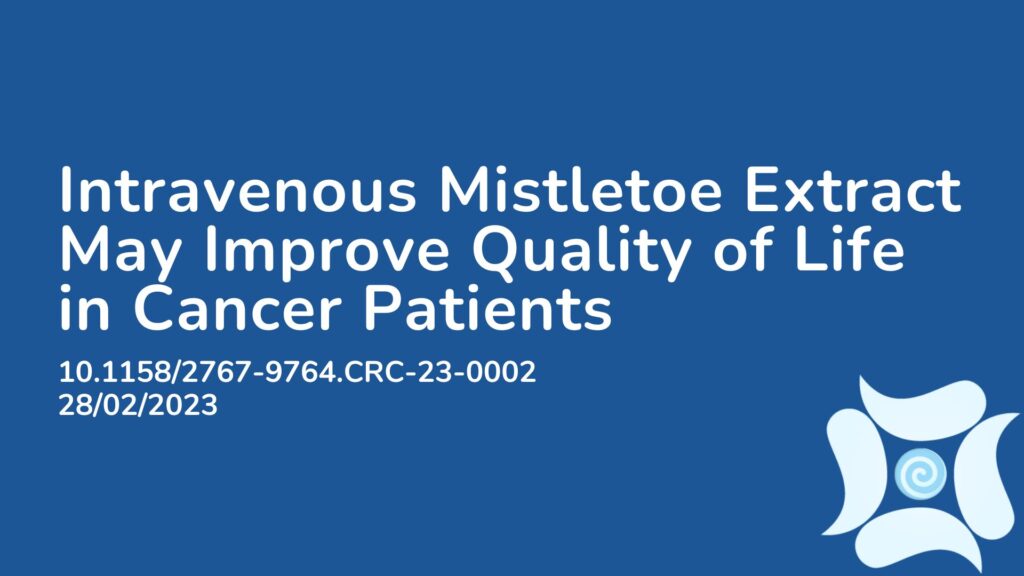Summary:
Mistletoe extract has traditionally been used for patients suffering with cancer to support symptoms and to improve quality of life for decades, however there is limited evidence to support its use and administration. Mistletoe extract is also controversial as it is sometimes administered intravenously, which is said to harness the greatest results. This paper is a phase I trial of intravenous mistletoe extract which is aimed to determine the appropriate dosing level and to evaluate its safety. 21 cancer patients on chemotherapy received doses of mistletoe extract three times a week and then their tumour progression and quality of life was monitored. Adverse events related to the treatment occurred in 13 patients including fatigue, nausea and chills, however the authors deemed these manageable when comparing to other adverse effects noted from cancer drugs. The mistletoe extract was able to stabilise cancer growth in 5 patients and reductions in baseline lesions were observed in 3 patients. The mistletoe extract also improved quality of life in the patients who were heavily treated for their cancer prior to the study. The authors concluded that future phase II trials are warranted given promising results in phase I showing that disease manageability as well as improved quality of life are potential outcomes.
Abstract:
Purpose: Mistletoe extract (ME) is widely used for patients with cancer to support therapy and to improve quality of life (QoL). However, its use is controversial due to suboptimal trials and a lack of data supporting its intravenous administration. Materials and Methods: This phase I trial of intravenous mistletoe (Helixor M) aimed to determine the recommended phase II dosing and to evaluate safety. Patients with solid tumor progressing on at least one line of chemotherapy received escalating doses of Helixor M three times a week. Assessments were also made of tumor marker kinetics and QoL. Results: Twenty-one patients were recruited. The median follow-up duration was 15.3 weeks. The MTD was 600 mg. Treatment-related adverse events (AE) occurred in 13 patients (61.9%), with the most common being fatigue (28.6%), nausea (9.5%), and chills (9.5%). Grade 3+ treatment-related AEs were noted in 3 patients (14.8%). Stable disease was observed in 5 patients who had one to six prior therapies. Reductions in baseline target lesions were observed in 3 patients who had two to six prior therapies. Objective responses were not observed. The disease control rate (percentage of complete/partial response and stable disease) was 23.8%. The median stable disease was 15 weeks. Serum cancer antigen-125 or carcinoembryonic antigen showed a slower rate of increase at higher dose levels. The median QoL by Functional Assessment of Cancer Therapy-General increased from 79.7 at week 1 to 93 at week 4. Conclusions: Intravenous mistletoe demonstrated manageable toxicities with disease control and improved QoL in a heavily pretreated solid tumor population. Future phase II trials are warranted. Significance: Although ME is widely used for cancers, its efficacy and safety are uncertain. This first phase I trial of intravenous mistletoe (Helixor M) aimed to determine phase II dosing and to evaluate safety. We recruited 21 patients with relapsed/refractory metastatic solid tumor. Intravenous mistletoe (600 mg, 3/week) demonstrated manageable toxicities (fatigue, nausea, and chills) with disease control and improved QoL. Future research can examine ME’s effect on survival and chemotherapy tolerability.
Article Publication Date: 28/02/2023
DOI: 10.1158/2767-9764.CRC-23-0002




